 boots
boots
 boots
boots
Randonnée ski boots need to perform a number of different functions during a day of touring - providing adequate control over your skis for descending while at the same time being flexible, light and comfortable enough to skin, hike and climb well for hours on end. It's not easy to accomplish.
Most modern randonnée boots are designed with light weight as a primary goal. They feature lighter construction using different plastics than alpine boots, a rockered lugged sole for hiking and climbing, and a lockable walking hinge that lets your ankle flex freely when moving uphill. To achieve stiffness without adding weight, touring boot designers typically use expensive proprietary materials like Pebax and Grilamid, as well as substituting carbon fiber for various structural pieces of the boot. All this, of course, adds to the pricetag. High-end randonnée boots now typically run in the $700-$1,000 range and even higher.
Backcountry interest is surging, and the largest potential market lies with the "crossover" alpine crowd - gear that can be used for both lift-served and self-powered modes of skiing. Manufacturers are concentrating on beefier boots that appproach alpine levels of stiffness and control but are still suitable for short to medium length touring, and all of the major alpine bootmakers have joined in. Many of these products are suitable for strong skiers moving beyond the boundaries of the ski area, who feel more secure with alpine-type support. Expect these boots to weigh in the neighborhood of 1500 to 1900 grams per boot (boot weights are normally for a 26.5 mondopoint sample).
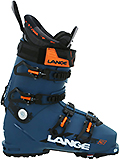
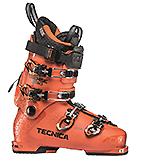

When you start doing longer trips and more vertical, it makes sense to put together a dedicated touring setup with a lighter boot that is designed primarily for touring rather than lift skiing. Look for something that weighs around 1200 to 1500 grams per foot with the smoothest and widest range of cuff motion you can find (assuming, of course, that you and your bootfitter can get it to fit your foot). Both the lighter weight and the ability to make a longer stride while skinning will make a big difference.
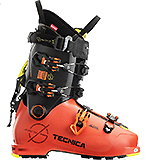
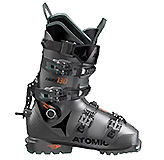
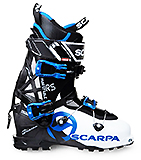
As with skis and bindings, there is a trade-off between control while skiing (and the ability to drive longer, wider skis) and comfort and energy conservation while climbing and skinning. Experienced ski tourists often willingly give up some downhill control in favor of lighter weight and improved climbing - after all, the vast majority of their time is spent going uphill - but the amount of downhill control a skier is willing to sacrifice is a very personal decision. What's right for you on any given day will take into account your skill level, type of touring, and snow conditions. Given a light ski and binding and ideal snow conditions, a boot that weighs in the neighborhood of 1000 grams per side can be the right call for some skiers.

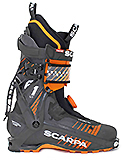
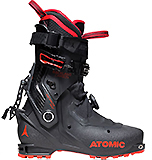
Thermo-formable boot liners (which are heated in a convection oven or with heat stacks, then placed in your boot and buckled up to mold to your foot) are common and highly desirable both for lightness and comfort. Several companies now offer heat-moldable shells as well, which are heated in a convection oven and worn by the skier until cool. Switching from stock to aftermarket liners is another option, and can transform both the fit and skiing properties of a boot. Keep in mind that the style of liner also affects performance, with overlap liners generally providing a stiffening effect and tongue liners generally better skinning flexibility.
As with any form of rigid plastic footwear, problems with protruding bony areas are best addressed by a professional boot fitter - a good fitting boot with a custom footbed can do wonders for your skiing, not to mention your comfort. Prevailing wisdom has it that you should always buy the boot that fits best, and there is some logic to this. If you can find a boot that fits well (after baking the liner) and it happens to ski and skin well for you, so much the better. The flip side of the coin is that you have fewer fit options in touring boots than in alpine boots, so many ski tourers shop for weight and features first and rely on a bootfitter to make it work for their foot - if you take this approach, it's best to talk to a bootfitter experienced in touring gear before you pull the trigger on a boot.
© 2022 Gregory C. Louie